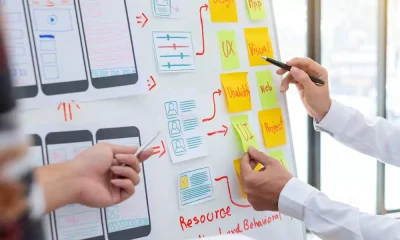Marketing
Next Level Business Practices: Guide to Understanding What Is Website Design

Web design is one of the most important tasks today.
Since the beginning of the internet, web design has played a crucial role in the development of business and technology. As more and more people gain access to the internet through mobile devices, web design is something that many people consider doing.
There are many aspects of web design that make it unique from other practices. When it comes to running a business, you’ll need to know how web design works so you can make an effective website that pulls in customers.
So what is website design? Read on to learn everything you need to know.
Visual Elements
Visual elements play a major part in the web design process because they’re what visitors first see upon visiting a site. Good web design combines a mixture of visual elements to make a site look appealing and engage an audience.
Here are some of the most important visual elements.
Copywriting
The written content that you see on a website is known as copywriting. Designers and content writers work together to come up with written content so users can get drawn to the site. There’s a bit of a marketing aspect to it, so it’s common to see things like catchy phrases in titles.
Fonts
Choosing the right fonts for your site is important because you want something that looks professional. For example, many people think of “Comic Sans” as a playful, childish font, so they typically don’t use it on sites targeting a younger audience.
Colors
The colors of a site often reflect what the site is about, or at least relates to it. If you were to visit a toy store’s site, you’d most likely find that it has a variety of colors. Sites trying to focus on a professional audience will probably use basic colors, such as black and white.
When you work with a web designer, they can help you come up with a color scheme that matches your site’s niche. They’ll also help you figure out what colors look good together.
Layout
The layout of a site greatly affects the search engine optimization (SEO) of a site. When users visit your website, they’ll want to quickly find what they’re looking for.
With a bad layout, they may not be able to and will end up exiting. When Google picks up that people barely engage with your site, it’ll drop in ranking.
Functional Elements
Functional elements are the other major part of web design. Most functional elements contain visual elements, but they stand out because they give users a way to interact with your site.
Here are some common functional elements.
Navigation
Things like drop-down menus and sidebars are navigation tools that many sites provide. These are essential functional elements because users need to be able to find what they’re looking for.
Animations
You can add a variety of animations to your site to make it look more attractive. For example, let’s say you have a login page. Whenever a user enters an incorrect password, your site can display a pop-up that tells them they’ve done so.
User Interactions
As users are going through your site, they’ll be interacting with all of the content. Anything that has to do with clicking, typing, and scrolling is a part of the user experience. Search bars are a great addition to any site, so visitors can look for something specific.
Compatibility
Having a successful website will require it to be compatible across multiple devices. Web design is all about getting a site to look good on both a desktop and a cellphone so that it can be accessed from anywhere. Mobile websites will often include drop-down menus and sliding features.
Speed
How fast a website loads often depends on the site itself rather than a user’s connection speed. If a website takes too long to load, it won’t attract users and will perform poorly. During the web design process, you can use something like Google’s Page Speed Test to see how fast your site loads.
Types of Website Design
There are various website designs, but there are two that stand out: adaptive and responsive. These dominate the web design industry because of the rising popularity of mobile devices.
Adaptive
Adaptive sites are those that are optimized for different screen sizes. These sites typically have several versions, so they can change with each resolution. Some also have exclusively mobile versions of their sites, which will change the entire interface.
Responsive
Responsive sites constantly change as the screen size is reduced. Rather than having preset versions to match certain resolutions, these can respond to any resolution. This is beneficial to anyone who works with varying window sizes because the site will look good at all times.
What Is Website Design Without a Good Designer?
Web design is the process of designing websites to allow users to interact with them and find information. To build a good website, you’ll need to find someone who’s known for their web design skills.
We encourage you to hire a web designer now that you have the answer to the question, “What is website design?” If you run a business or are trying to grow your site, having a proper web designer will be one of the best investments you make.
Browse our articles to learn more about web design and how you can benefit from it.




